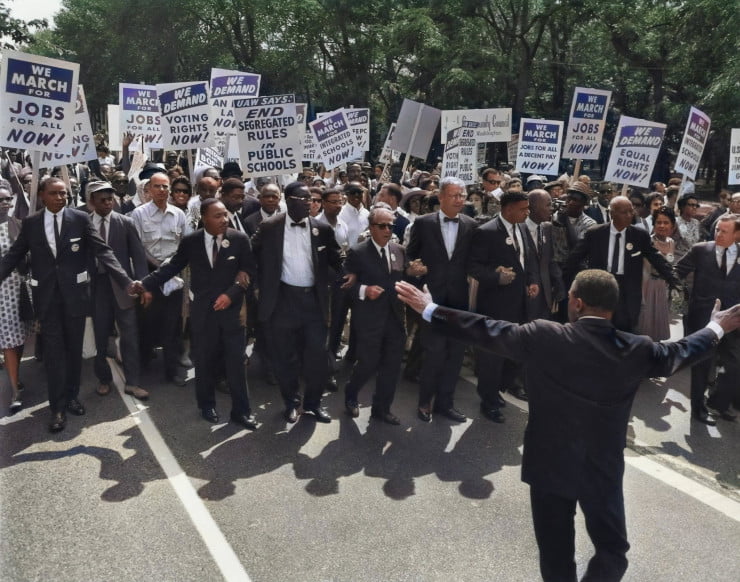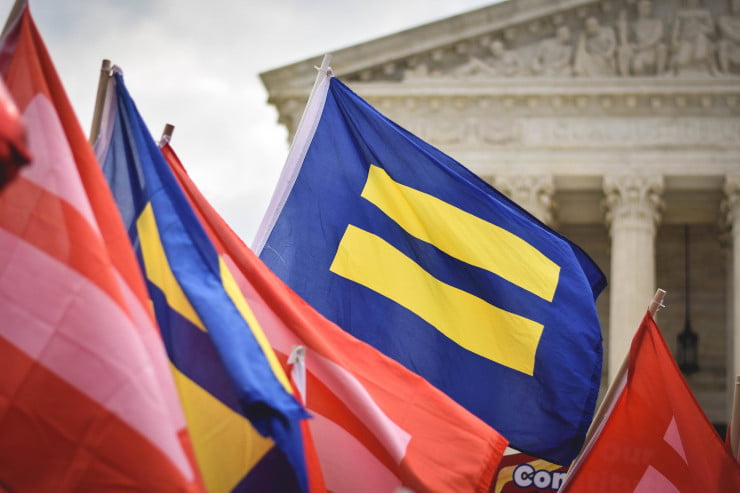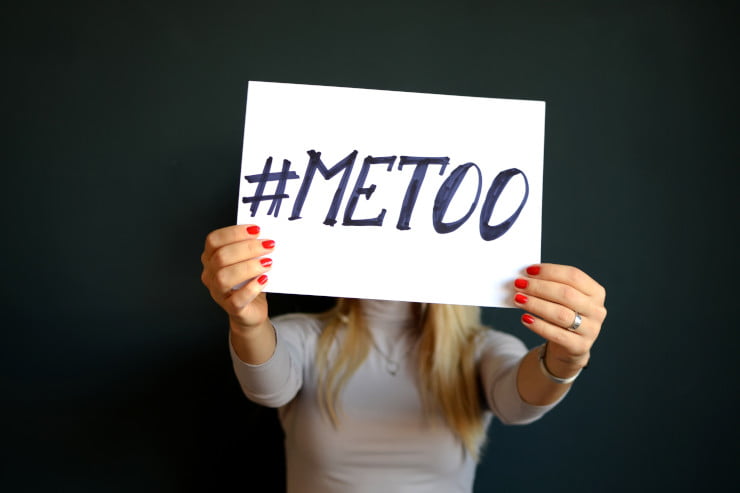Whether you’re a budding social movement leader, or looking for ways to get more involved with an issue you’re passionate about, social media can play a huge part in furthering your mission. Read on to learn more about how social media content curation can aid in social movement efforts.

What Are Social Movements?
Before we dive in to harnessing the power of content creation for social movements, it’s important to understand what exactly a social movement is. The Britannica encyclopedia defines social movements as
“Social movement, loosely organized but sustained campaign in support of a social goal, typically either the implementation or the prevention of a change in society’s structure or values. Although social movements differ in size, they are all essentially collective. That is, they result from the more or less spontaneous coming together of people whose relationships are not defined by rules and procedures but who merely share a common outlook on society.”
In simple terms, a social movement happens when a group of people who share a common outlook or goal on a subject, often related to social, cultural, or legal issues, come together in the hopes of evoking change. Social movements can surround very large and broad issues that encompass several smaller goals, or very specific subjects. These are a few examples of famous social movements.
Civil Rights Movement
One of the largest and most successful social movements, you might remember learning about the Civil Rights Movement in school. This movement surrounded the issues of racial equality in the United States during the 1950’s and 1960s. Though many different leaders played important parts in this social movement, you might recall Rosa Parks, the Freedom Riders, and Martin Luther King Jr..
This was not a peaceful movement, as the Civil Rights activists during this time were met with a great deal of pushback and violence. Eventually, however, they were victorious and secured equal constitutional and legal rights that sparked a wave of change across the country.
Mothers Against Drunk Driving
This social movement is centered around stopping drunk driving through the education of young people, petitions to increase penalties for drunk driving, and support to families who’ve lost loved ones due to drunk driving. Mothers Against Drunk Driving was created in 1980 by Candace Lightner, a mother who lost her 13-year-old daughter due to a drunk driver’s actions. She began to spread the word about the movement, created her non-profit organization, and appeared in a TV movie in 1983, which helped garner significant traction.
Since then, the social movement has played a major part in educational programs, influencing stricter laws and regulations, and providing a platform for the families of victims of drunk drivers.
Women’s Suffrage Movement
Another famous social movement you might have studied is the Women’s Suffrage Movement. Starting in the late 1800’s, the women of the United States began to meet and protest the lack of legal rights given to them under the Constitution. Though there were several issues of legal reform desired, the first step was being granted the right to vote. Thus, at the turn of the century, the Women’s Suffrage Movement grew from small meetings to a nationwide cause.
Common names associated with this social movement are Susan B. Anthony, and Elizabeth Cady Stanton. Through suffragette marches, peaceful protests, picketing, and countless appeals to state and national courts, women were eventually enfranchised through the 19th Amendment.
Gay Rights Movements – Marriage Equality
In more recent history, the Gay Rights Movement for marriage equality in the United States involved obtaining legal rights and protections for members of the LGBTQIA+ community for the right to get married. Though the Gay Rights Movement on a large scale had been going on for decades, targeting an array of other specific issues, this movement in the mid-2000’s was one of the most notable to date.
Groups such as the Civil Marriage Collaborative and Freedom to Marry worked together to provide the funding and organization needed to get this social movement off the ground. It took nearly a decade of protesting, and petitioning to change minds and hearts in the country and get the answer they were hoping for. In June 2015, this social movement proved victorious and marriage equality was declared legal in the United States.
Time’s Up & Me Too
These two social movements are closely related, focusing on anti-sexual assault and women’s empowerment. Gaining notoriety in 2017, these movements sparked public conversation and enlightenment on the issues women face both personally and professionally. While the #MeToo movement was started by activist Tarana Burke years earlier, it picked up traction in the wake of the allegations against Harvey Weinstein. The Time’s Up Movement is sponsored by a long list of artists and celebrities, and is aimed on specific, actionable goals to make a change for these issues professionally and in the workplace.
These social movements have culminated in marches, protests, support for survivors of sexual assault, and petitions for stronger legislation arround sexual harrassment and assault. As of spring 2018, the Time’s Up Legal Defense Fund, designed to help women in need obtain legal representation for these issues, had raised over $21 million dollars.
Common Struggles Social Movements Face

No matter what area your social movement is centered around, there are several connecting qualities, and struggles that many social movements face. Often these movements are started through word of mouth over time, and many leaders find that they can grow at a rapid pace. In many cases, the leaders of these groups aren’t prepared for the massive expansion of their social movements. Common struggles groups face include a lack of organization, funding, time, and staff.
Each of these four pain-points can cause extra stress, and a lag in the efficiency with which the message of the movement is spread, and supporters can band together and connect. With even a small amount of extra organization, and knowledge of the right tools, however, this issue can be alleviated and let social movement leaders get back to the truly important work.
What Is Content Curation?
It’s no secret that in the digital era, a primary method members of social movements use to connect, inspire, and plan is through social media. When there’s a lack of dedicated staff or funding to go into managing social media accounts, however, this communication method can leave a bit to be desired.
An excellent strategy to use for social movements is content curation. This social media tactic leverages the existing creative content of followers who use a unifying hashtag. Social movements can locate this topic-specific content and repurpose it on their own accounts with minimal effort.
How Can Content Curation Help Social Movements?

But how can content curation really make a difference in your social movement? There are several ways. You can provide a prompt for social media followers to be inspired by and let them know that their content might be featured. Or, simply request to use inspirational posts you come across online.
The power of content curation can be huge. For one, it’s an easy way to spread the word about your social movement, as the more people who post and share are exposing their networks to your cause. It also can act to get supporters excited and motivated to continue to stay involved.
Curated content that demonstrates and educates on ways folks can get involved is another positive of the strategy. Many people might not know what opportunities are available to them, or might feel like they aren’t important enough to make a difference. Seeing other supporters just like them taking part can be inspiring.
Finally, content curation can spark chains of connection and communication amongst supporters and the opposition. This can be hugely beneficial to provide support and encouragement to those who need it. It can also be instrumental in achieving the goals the social movement has laid out, by helping more people understand the nature of the cause.
Content Curation Tips for Social Movements
One of the easiest ways to curate content with minimal effort is through a social media aggregator tool. Tools like Juicer help you create feeds of intentional content pulled from up to 15 social media platforms. You can also find content listed under specific hashtags, and project the feeds onto social media walls.
If you do plan to use content from individuals who aren’t part of your leadership team, it’s often a good idea to comment or message the person to confirm that they give permission for their content to be republished. Creating a contest that outlines the intent of use and requesting followers to submit their content is another easy way to minimize steps in the content curation process.
Whichever route you choose, content curation can play a powerful part in creating meaningful connection and unity amongst supporters of your social movement while also educating others. How have you used content curation for social movements?
